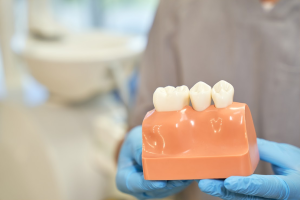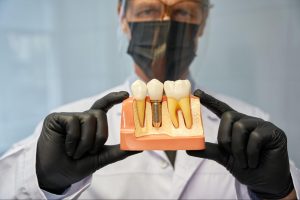Cosmetic dentists are known for helping people achieve more confident smiles by improving the appearance of teeth and gums. A bright, symmetrical smile can leave a strong impression, making these specialists valuable for enhancing their look. Their expertise covers more than basic dental care, offering solutions for discoloration, misalignment, and damaged teeth. Choosing the right cosmetic dentist can lead to lasting improvements in appearance and oral health.
The Core Responsibilities of Cosmetic Dentists
Improving a smile goes beyond aesthetics—it can change how people feel about themselves. Cosmetic dentists specialize in treatments that enhance dental appearance while ensuring oral health remains intact. Their work involves precise techniques, advanced materials, and personalized care to create natural-looking results. Each responsibility they handle plays a role in restoring confidence and improving the function of teeth:
Enhances Tooth Color
Discoloration can result from aging, diet, or certain lifestyle habits. Cosmetic dentists use professional whitening treatments to lift stains and brighten teeth more effectively than store-bought products. Customized whitening plans help patients achieve their desired shade while protecting enamel. Safe and controlled procedures prevent sensitivity and provide longer-lasting results.
Reshapes and Restores Teeth
Misshapen or uneven teeth can affect both appearance and bite function. Veneers, bonding, and contouring reshape teeth to create a more uniform look. Cosmetic dentists carefully adjust tooth size and shape to ensure a natural fit within the smile. Attention to detail in these treatments enhances symmetry and improves overall facial harmony.
Replaces Missing Teeth
Gaps in a smile affect both confidence and oral function. Dental implants, bridges, and dentures offer solutions that restore missing teeth with durability and aesthetics in mind. Cosmetic dentists select the best replacement option based on a patient’s needs and jawbone health. Advanced techniques ensure the restorations blend seamlessly with natural teeth.
Aligns Teeth
Crowded, gapped, or misaligned teeth impact both appearance and dental health. Cosmetic dentists offer clear aligners and braces to gradually shift teeth into better positions. Customized treatment plans address alignment concerns while maintaining comfort and convenience. Properly aligned teeth improve bite function and reduce the risk of future dental issues.
Improves Gum Appearance
Gums frame the teeth, making them essential to an attractive smile. Cosmetic dentists perform gum contouring to reshape excessive or uneven gum lines. Treatments also address gum recession, helping to restore balance between teeth and soft tissues. A well-proportioned gum line enhances the overall look of a smile while supporting oral health.
Repairs Minor Damage
Chips, cracks, and worn edges make teeth look aged or unhealthy. Cosmetic bonding and enamel reshaping refine these imperfections with minimally invasive techniques. Dentists use tooth-colored materials to repair damage while maintaining strength seamlessly. Minor corrections make a significant difference in smile aesthetics without requiring major procedures.
What Sets Cosmetic Dentists Apart from General Dentists?
General dentists focus on maintaining oral health, while cosmetic dentists specialize in enhancing the appearance of teeth and smiles. Both professionals play essential roles in dental care, but cosmetic dentistry involves advanced techniques to improve aesthetics. Treatments like whitening, veneers, and dental implants require a deep understanding of dental materials, facial harmony, and artistic precision. The difference lies in their training, approach, and the types of procedures they perform.
Specialized Training in Aesthetic Dentistry
Cosmetic dentists receive additional training beyond general dentistry to master procedures that enhance smiles. Courses in smile design, dental materials, and advanced restoration techniques refine their expertise. A strong focus on aesthetics ensures that results look natural while maintaining function. This specialized education allows them to create transformations beyond standard dental treatments.
Advanced Techniques for Smile Enhancement
Creating a visually appealing smile requires precision and artistic skill. Cosmetic dentists use digital imaging, customized veneers, and minimally invasive procedures to achieve natural-looking improvements. Each treatment plan considers tooth shape, size, and color to ensure harmony with facial features. Attention to detail sets their work apart from general dentistry, which primarily focuses on function and prevention.
Expertise in Tooth and Gum Aesthetics
A balanced smile involves more than just healthy teeth. Cosmetic dentists refine gum lines, correct asymmetry, and address discoloration to create a well-proportioned look. Treatments like gum contouring and enamel reshaping require a deep understanding of aesthetics. Small changes in tooth shape or gum position can significantly impact the overall appearance of a smile.
Use of High-Quality Aesthetic Materials
The materials used in cosmetic dentistry differ from those in general restorative work. Porcelain veneers, composite resins, and ceramic crowns are chosen for their lifelike appearance and durability. These materials mimic natural enamel, ensuring restorations blend seamlessly with surrounding teeth. A focus on aesthetics means that every restoration is designed to be both functional and visually appealing.
Customized Treatment Plans for Each Patient
Cosmetic dentists tailor their approach to meet individual aesthetic goals. A detailed consultation helps identify the best treatments based on tooth structure, skin tone, and facial proportions. Digital simulations and mock-ups allow patients to preview results before treatment begins. Personalized plans ensure that enhancements look natural and complement the patient’s appearance.
Focus on Confidence and Smile Transformations
Enhancing a smile goes beyond just improving dental health. Cosmetic dentists understand how a person’s appearance affects confidence and self-expression. Their work often involves complete smile makeovers that can change how patients feel about themselves. Aesthetic improvements lead to lasting positive effects on self-esteem and social interactions.
How Cosmetic Dentists Personalize Treatments for Patients
Cosmetic dentistry goes beyond a one-size-fits-all approach, as every smile has unique characteristics. Aesthetic goals, facial structure, and dental health influence the tailored treatments. Cosmetic dentists use advanced techniques and personalized planning to ensure natural results and complement individual features. Careful assessment, modern technology, and customized solutions create a treatment experience that aligns with each patient’s needs.
Comprehensive Smile Assessment
A detailed evaluation helps identify areas that need improvement. Cosmetic dentists examine the best approach to determine tooth shape, color, alignment, and gum proportions. Photos, X-rays, and digital scans provide a complete picture of the patient’s dental structure. This step ensures that every aspect of smiles is considered before recommending treatments.
Digital Imaging and Mock-Ups
Previewing results before starting treatment helps patients make informed decisions. Digital imaging and 3D mock-ups show potential tooth size, shape, and alignment changes. These tools allow adjustments to be made before any procedure begins. A visual representation of the outcome helps patients feel confident about their choices.
Customized Treatment Plans
Each patient receives a plan tailored to their specific dental concerns. Cosmetic dentists combine different procedures, such as whitening, veneers, and orthodontics, to achieve the desired results. Factors like face shape, skin tone, and bite function influence treatment recommendations. A well-structured plan ensures both aesthetic appeal and long-term dental health.
Selection of Materials
The right materials are crucial in achieving lifelike results, especially in cosmetic dentistry. Porcelain, composite resin, and ceramic restorations are chosen for durability and color matching. Cosmetic dentists customize these materials to blend seamlessly with natural teeth. The goal is to create realistic enhancements while maintaining strength and function.
Minimally Invasive Techniques
Advanced cosmetic procedures focus on preserving as much natural tooth structure as possible. Techniques like no-prep veneers and laser gum contouring offer solutions with minimal discomfort. Conservative approaches reduce recovery time while ensuring long-lasting results. A careful balance between aesthetics and function keeps smiles healthy and attractive.
Post-Treatment Guidance
Maintaining a newly enhanced smile requires proper care and follow-up. Cosmetic dentists provide personalized aftercare instructions based on the treatments performed. Recommendations may include lifestyle adjustments, specialized oral care routines, and periodic check-ups. A commitment to post-treatment care ensures that results remain beautiful for years.
The Impact of Cosmetic Dentistry on Self-Confidence
Improving oral cosmetics is not just about perfecting beauty standards. It is also about boosting confidence. Fortunately, cosmetic dentists do more than improve smiles—they help people feel better about themselves. A well-proportioned, brighter smile can change how individuals interact with others and perceive their appearance. Confidence grows when teeth look healthier, straighter, and more balanced, making personal and professional interactions more comfortable. Investing in cosmetic dentistry is about aesthetics, enhancing self-esteem, and creating a positive outlook.
Learn how cosmetic dentists at Meader Family Dentistry blog can help transform your smile with advanced treatments tailored to your unique dental needs.






